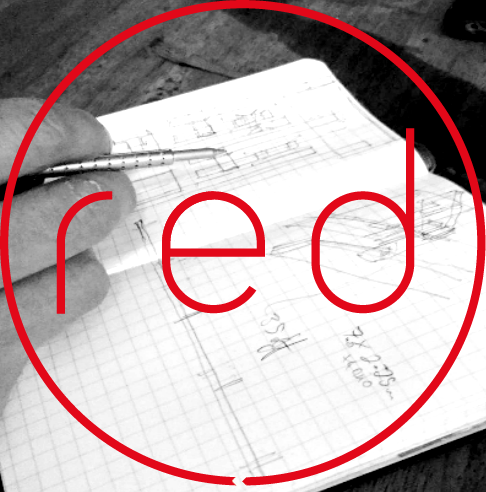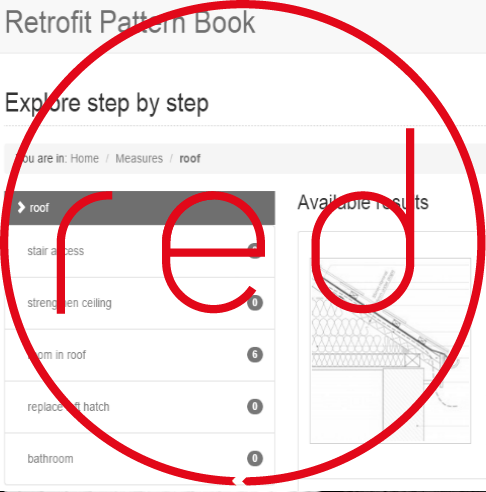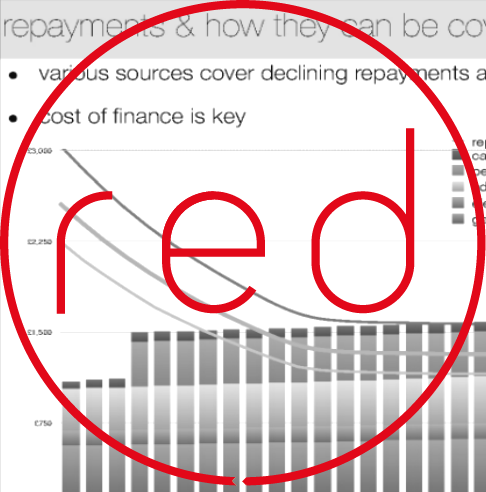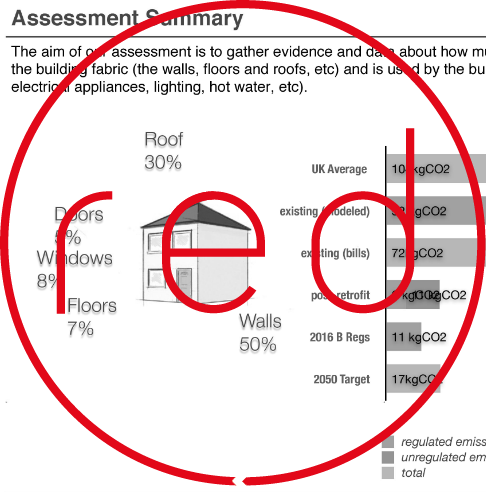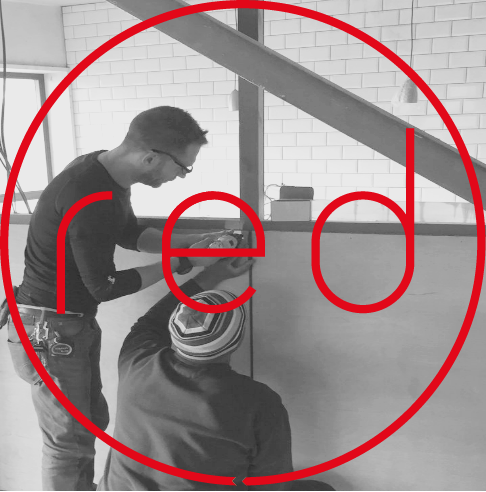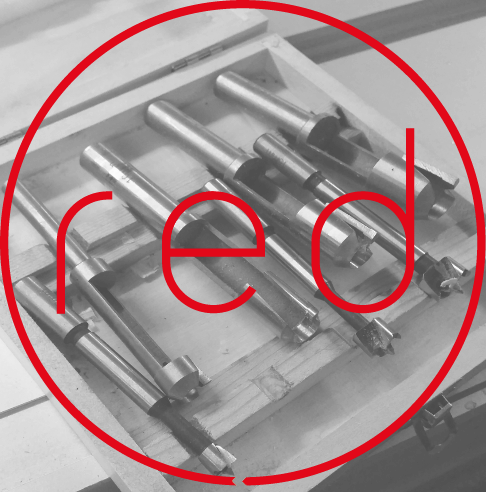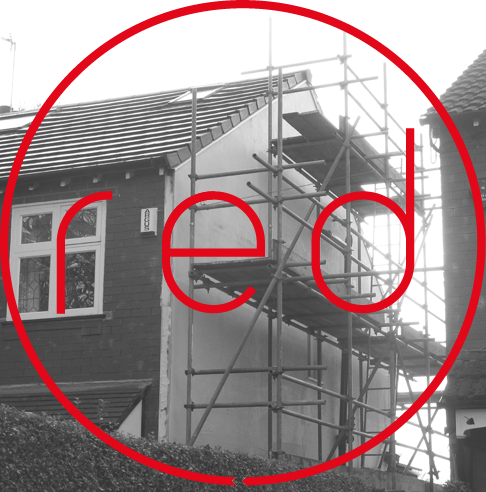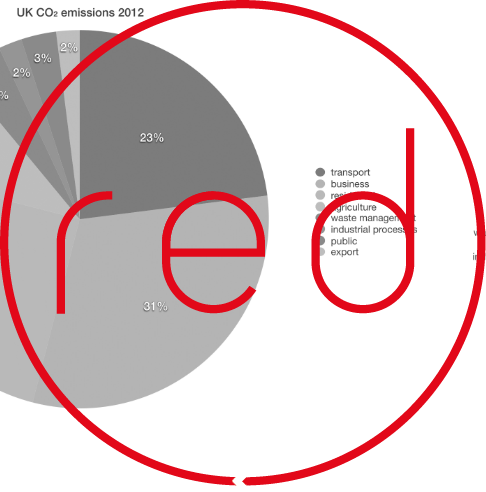renewable energy
photovoltaic panels
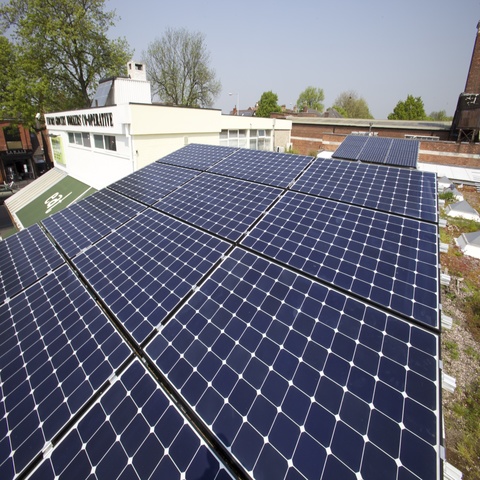
The most common renewable energy generation used on smaller buildings, Photovoltaic (PV) panels generate DC electricity that is then usually passed through an inverter that converts this to AC for use in the home or export to the grid, it then passes through a generation meter that governs how much Feed In Tariff (FiT) you get paid.
In some cases there is an export meter that tells you how much energy you’ve not used , but in most cases the amount used on site is deemed to be 50%.
As FiT has declined, getting PV to pay for itself now requires more effort to replace electricity you have to buy, timeswitches on appliances or simply altering daily timetables to turn things on when the sun is out are very useful.
battery storage
Not renewable energy in itself and indeed they can be used to store off peak cheap electricity from the grid for use at peak times.
Hitherto inaccessible to most, prices have started to fall dramatically: red is teaming up with an installer to offer a battery and/or PV package as part of out retrofit offer to help make the overall numbers stack up and speed up the journey to zero-carbon housing.
Battery storage is likely to be biggest game-changer in the way electricity is used, stored and distributed that we have seen for decades.
We are also working with what is sometimes referred to as a Virtual Power Plant (VPP) operator looking at aggregation of separate storage to be able to trade energy collectively.
With smart metering about to enable consumers to pay for electricity at different prices depending on the time of day, batteries will not only enable almost all of the PV generated to be used on site, it will also enable demand shifting. This is where you charge batteries when you don't need power when it is cheap; but use your batteries instead of the grid at peak times. This has multiple benefits as it enables you to save on you bills, but also through a VPP trade-in demand reduction as well as selling some of the energy in the battery back to the grid to help keep the lights on at peak times.
wind
One of the cheapest sources of harvestable renewable energy when done at scale, it is less easy on a single building scale.
Firstly the wind has lost much of its energy near ground level compared to what you get on a tower; then they're usually much smaller and it is the total area presented by the spinning blades - not their diameter that governs their power generation potential. So a 2m diameter turbine generates 1% of the power of a 20m diameter turbine.
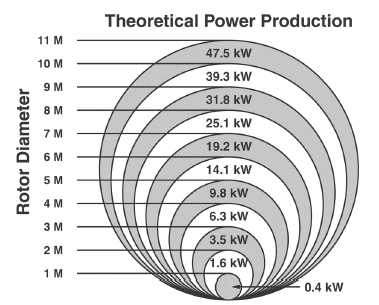
The other issue affecting performance of small turbines is that they are much more susceptible to eddies and air currents round buildings.
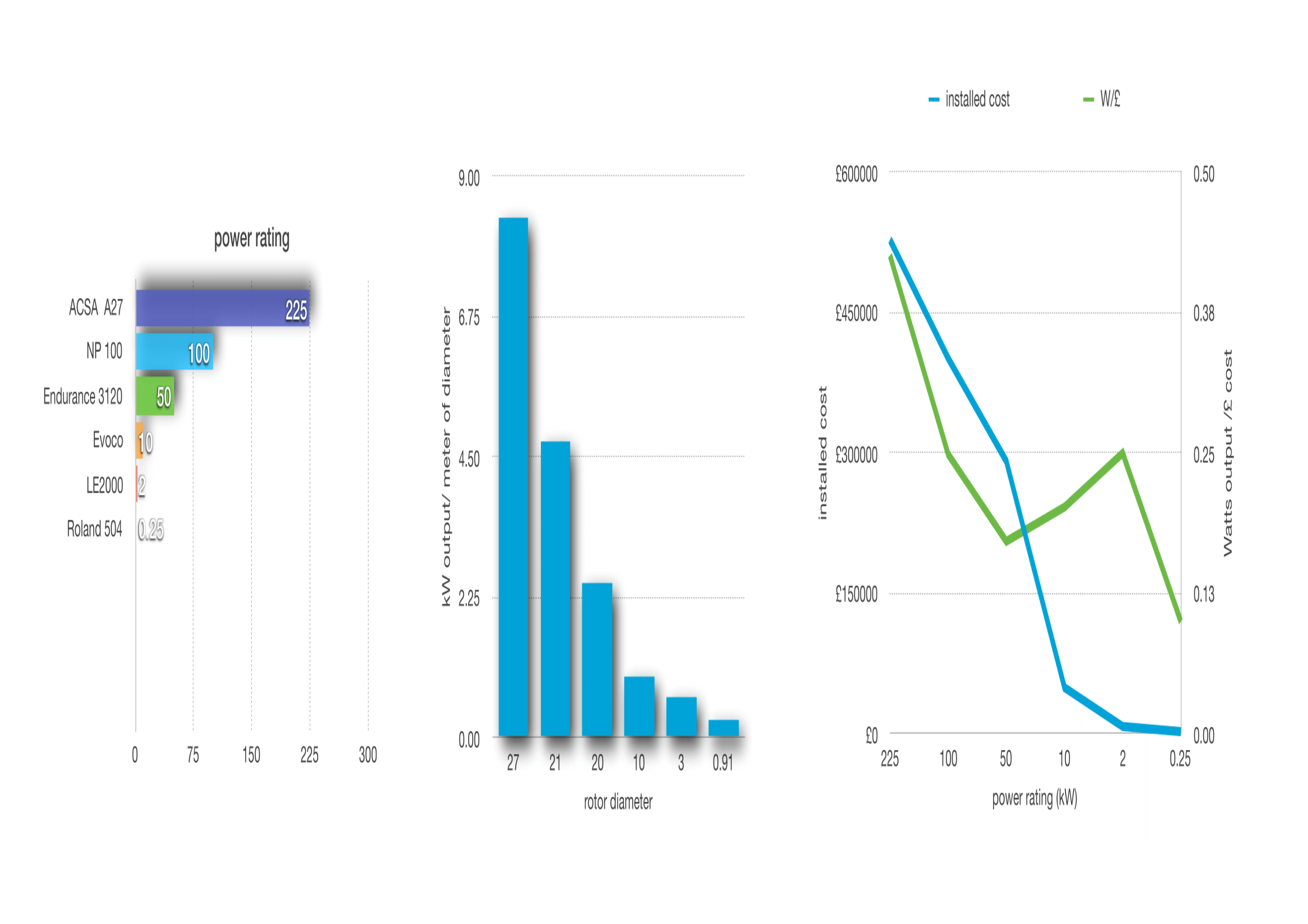
As you can see from the graph, not only is output affected by size, so is cost - the larger you can make it the better.
There has been much excitement about vertical axis wind turbines that might be less susceptible tho frequent changes in direction, but these are not as efficient at harvesting the energy of the wind as it passes. There is even a ridge 'turbine' - a bit like a lawnmower's blade along the ridge of the roof making use of the roof slope concentration the airflow, but we have not heard of sufficient installations of these to be able to recommend them yet.
Further issues that then need to be considered are noise and visual disturbance.
All that said, wind is a great compliment to sun, especially in the north west, so it may be worth considering if you have the right spot - on top of a pole rather than the roof - away from building and trees that will disturb the airflow.
hydro
We have not yet had the chance to help on a hydro yet, but it is something we think in the right circumstances can contribute to the low carbon journey. So if you have a stream a the bottom of your garden with even just a few gallons a minute flow and a head of at least 2ft then you will be able to generate something, so small compared to the larger schemes most think of that it is referred to as pico-hydro. The power available is dependent on the flow rate and the head - the height the water drops. Turbines are designed differently depending on whether it is a high head with a low flow rate or vice-versa. 1ltr per second but dropping 200m and 100ltr/s dropping 2m will both generate 1kW.
anaerobic digestion
This is another power source best done at larger scale, we have not heard of small scale versions but they definitely strengthen the argument for keeping food out the the landfill stream and directing it to this kind of process first.
combined heat and power
We've put this last as it does not really qualify as renewable technology, but it's there in the Feed in Tariff tables. Rather than being renewable it is about making better use of the fuels being burnt. So where a generator will simply get rid of heat produced as part of the generation process as waste a CHP unit will use that heat to provide space and hot water heating. There are now domestic scale versions of these available using various technologies like the Stirling Engine or fuel cell technology generating between 5 and 8kW of heat to between 750 W and 1kW of electricity. They are expensive however and the high tech nature of them means there have been issues with maintenance and reliability in some cases. There is an argument that the amount of money they cost might be better spend on demand reduction

